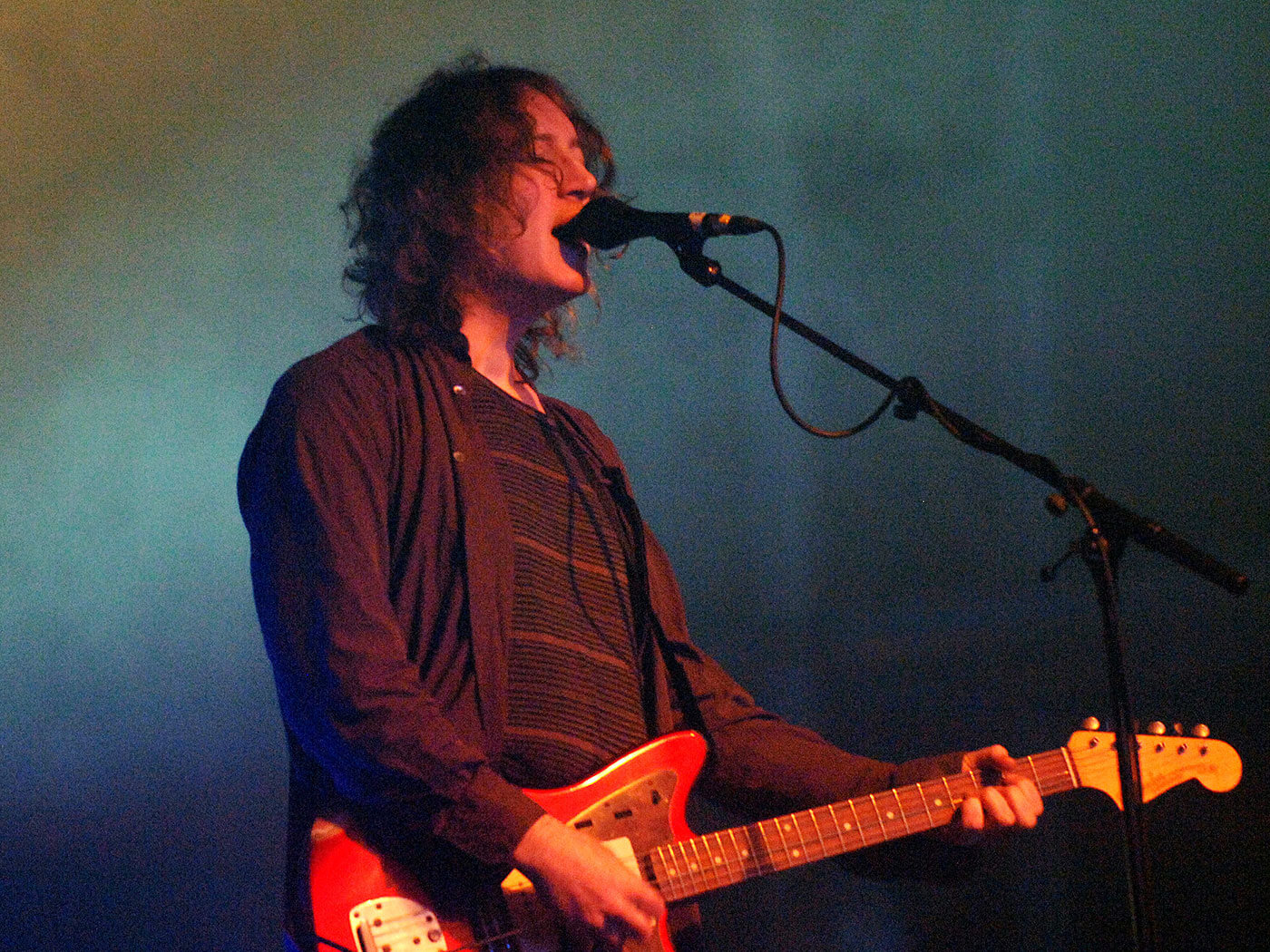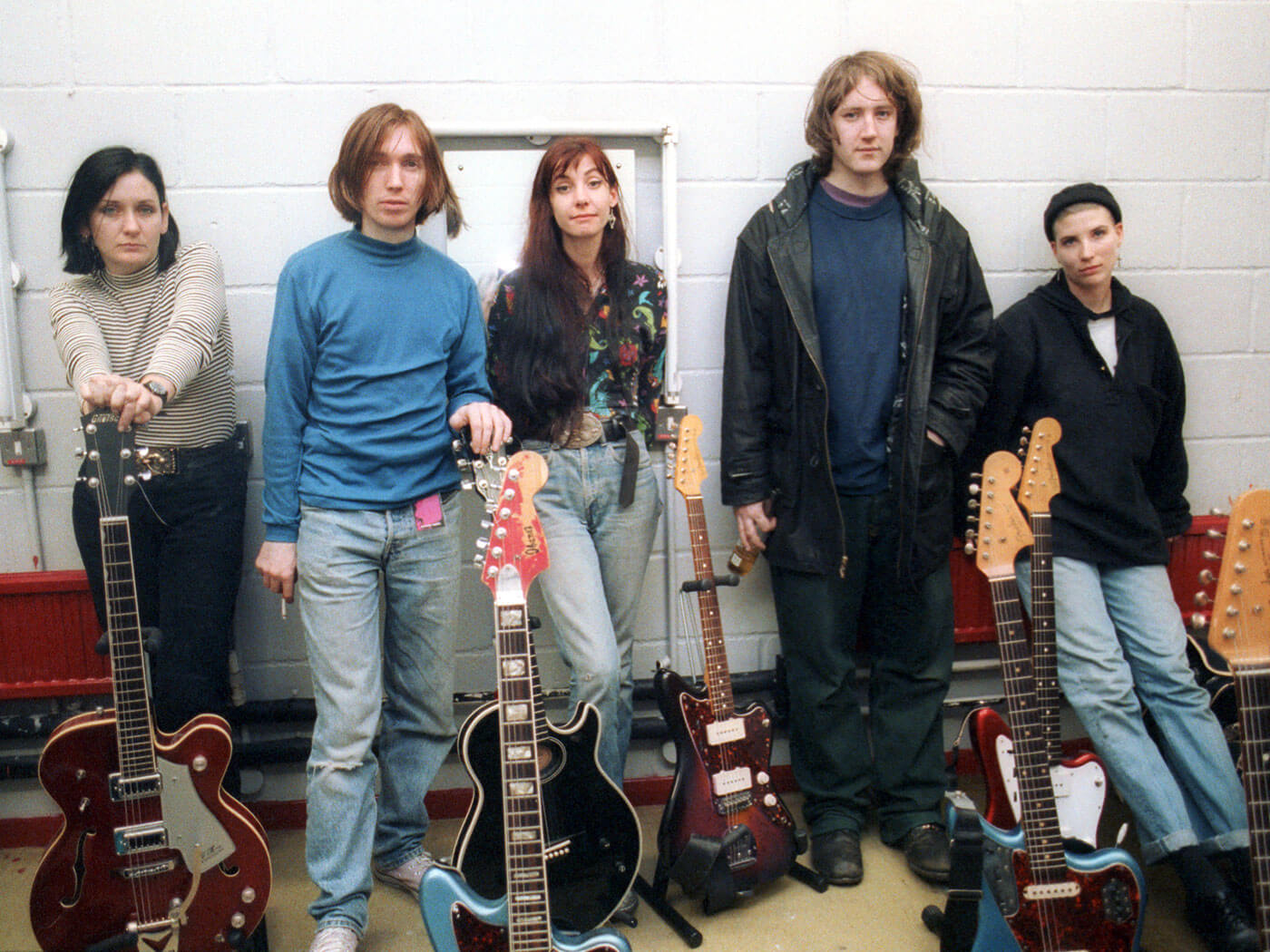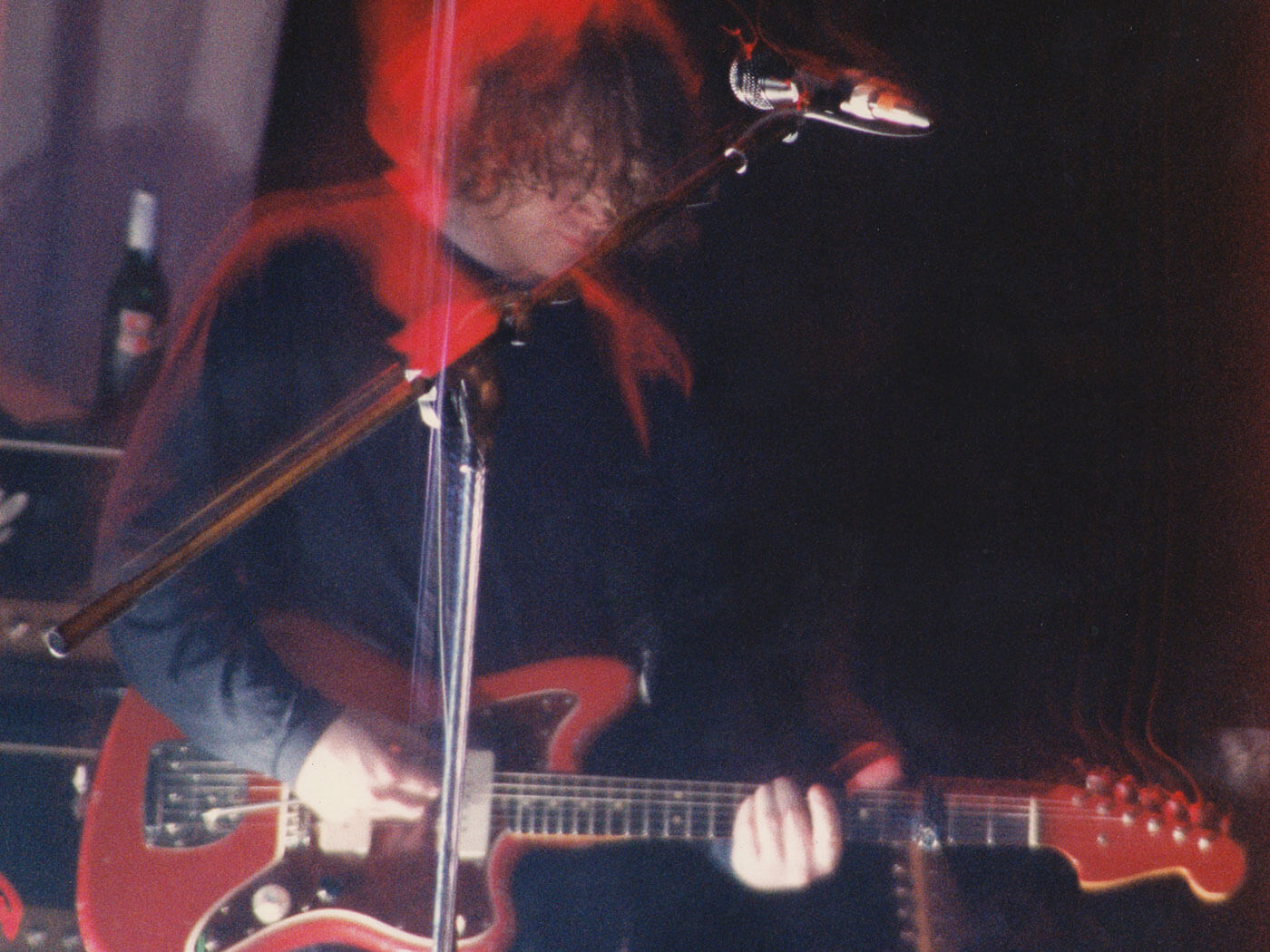My Bloody Valentine, Kevin Shields and me: recording guitar with a shoegaze icon
Guitar.com’s Huw Price was a studio engineer for My Bloody Valentine during their early 90s pomp: with the band’s hugely influential back catalogue finally available on streaming platforms, he looks back at the unique experience working with the Sultans Of Shoegaze.

Image: Samir Hussein / Getty
On the inside sleeve of My Bloody Valentine’s masterpiece, Loveless, my name is included among the ‘engineered and assisted by’ credits. It’s a virtual who’s who of jobbing sound engineers who staffed the struggling studios of the early 1990s, and mine isn’t the only name that’s spelled incorrectly – but credits were never a priority for Creation Records.
Truthfully, I didn’t do much on Loveless, but I did spend several weeks working on the EP that proceeded it, Glider. The band had spent most of the previous year moving between studios, in the seemingly endless process of recording their ‘difficult’ second album.
In-house engineers like myself worked with whoever booked the studio – sometimes engineering, but often assisting if a band brought their own engineer. MBV’s reputation for burning out studio staff preceded them, and they didn’t have an engineer…
They arrived at The Garden Studio, in a pre-gentrified Shoreditch, in early January 1990. Drums had already been recorded, so I aligned the studio’s Otari MTR90 MkII 24-track tape machine with the band’s two-inch test tones and grabbed a Neumann U47 microphone to begin recording bass.
An Ampeg SVT amp with a matching 8×10 cab was set up in the acoustically dry space between the office and the live room. A rented Warwick bass was plugged into a Tone Bender fuzz and I was surprised that Kevin intended to play it rather than bassist Debbie Googe. Kevin spent almost the entire day working on a bass sound.
We quickly established a routine. Kevin didn’t like working while the studio staff were present, and going nocturnal meant he could avoid them altogether. Sessions would begin around 8 PM and continue through the night, so I was commuting in the dark and sleeping through the days. I barely saw any daylight between early January and mid-February.
The whole band showed up to every session but, with the exception of Bilinda Butcher’s vocals, Kevin did everything. The control room had a large sofa and Debbie, Bilinda and drummer Colm Ó Cíosóig would sit there in total silence. But when we left Kevin in the studio and headed to the pub, they were good company.

Kevin would position himself next to me at the mixing console and talk for hours. I found him interesting and entertaining, but when he did focus on something, he focused like nobody else I ever worked with.
Garden view
Those weeks at The Garden were mostly spent recording vocals and guitar tracks. Kevin used two guitars – his Burgundy Mist Jazzmaster and a borrowed mid-60s Jaguar – and we linked a Marshall JTM45 with a Vox AC30 we’d rented from Harris Hire.
Getting guitar sounds took even longer. I would set up arrays of microphones – like a politician’s press conference – assign them to individual channels and hand over to Kevin. He spent ages huddled over the desk, pushing up faders and listening to each microphone while playing.
Eventually, Kevin would arrive at an amplifier and microphone balance that didn’t traumatise him and we could record. He would invariably nail it in one take and I recall that he played with outstanding accuracy and feel.
I operated the equipment, connected the microphones, ran the tape machine and handled the desk and patchbay, but I can’t claim to have ‘engineered’ MBV. My role was setting things up for Kevin to achieve the sounds he wanted by himself.
No equalisation, compression or effects pedals were used while recording guitars, however Kevin always dialled up a gated reverse reverb effect on either a Yamaha SPX90 or Alesis Quadreverb – he didn’t mind which.
Kevin also manipulated the whammy bar continually as he was playing. When the various takes and tones were combined, there was a randomness to the whammy bar effect, with guitar tracks changing pitch together and independently. The result was a massive composite guitar sound that was greater than the sum of its parts.
But a vocal effect Kevin created had the most profound effect on me. He sang improvised oohs and aahs throughout one of the songs, and then, without listening to previous takes, he overdubbed several more tracks of the same.

These vocals shifted arbitrarily between harmony and dissonance. When Kevin processed them with radical equalisation and reverb, he created something akin to whales performing Gregorian chant in a canyon.
It’s among the most innovative and beautiful things I ever witnessed in a recording studio. My impression is that Kevin generally had a clear idea of what he wanted to achieve and when he eventually got started, he worked methodically.
Kevin also obsessed over tiny details that nobody else would notice – maybe some mechanically induced noise or a weird harmonic overtone. He didn’t imagine these things and they mattered because they mattered to him.
Glide guitar
Glider was the first proper new music My Bloody Valentine had released since their debut album Isn’t Anything in 1988. With the band having begun work on Loveless back in February 1989 (recording would continue until September 1991) it’s perhaps understandable that Creation – who had spent so much money on an album that was nowhere near finished – needed MBV to release an EP to generate some income in the meantime.
Andy Weatherall was scheduled to remix a track we had been working on, and at around 7 AM during our final session at The Garden, Kevin asked to record a keyboard part.
I hooked the studio’s Yamaha DX802 synth up to a guitar amp, pulled up a preset he approved of and Kevin played an awesome hook. It was the quickest thing we ever did and Weatherall’s Soon remix almost revolves around it.
The Garden Studio went out of business shortly after the MBV sessions. After several months of freelancing, I landed a job at Jam Studios in Tollington Park and the first band that came through the door was My Bloody Valentine. They were still working on Loveless.
Producer Alan Moulder was on board by then, so I assisted Alan while he assisted Kevin. MBV weren’t happy at Jam and one Sunday morning the band failed to show up. It was a familiar pattern and, as usual, they had left all their gear and master tapes behind. Jam’s management shrewdly refused to release anything until the bill had been paid – along with a cancellation fee.
Creation Records settled the bill and offered to fill the remaining studio time with one of their other bands. That’s how I ended up being one of the recording engineers on Primal Scream’s Screamadelica, but that’s another story…
For more features, click here.
